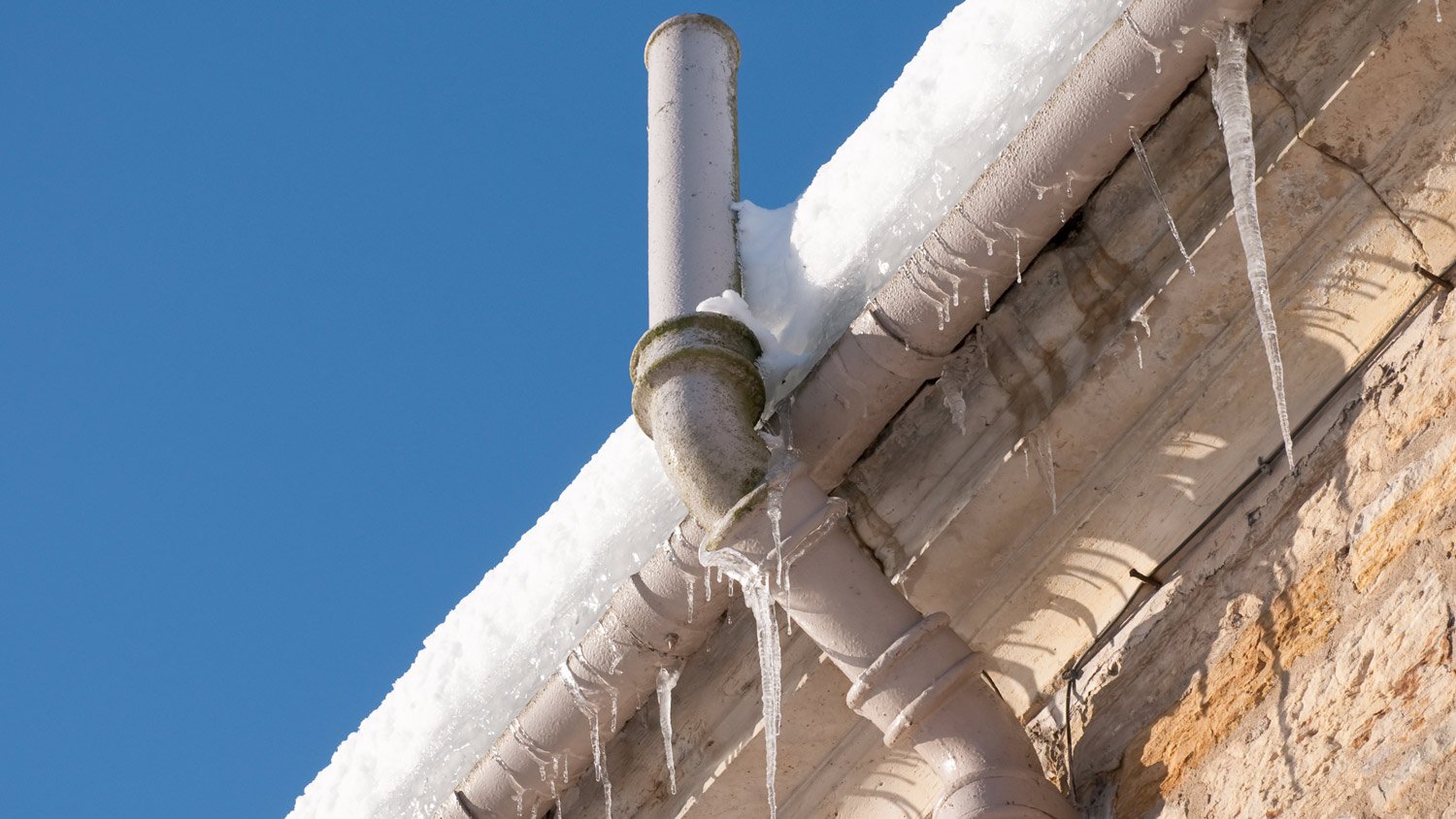
Discover the average cost of roof snow removal, key price factors, and ways to save. Get transparent estimates to protect your home this winter.
The cold, hard truth about ice dams and the roof damage they cause


Ice dams can cause roof damage, including broken shingles, isolated roof leaks, and even structural damage.
Homeowner’s insurance often covers ice-related damages, but check your policy for specifics.
The best way to prevent ice dams is to ensure you have proper roof insulation.
Ice dams are a common issue for roofs in the winter, and unfortunately, they can lead to severe roof leaks and property damage. Understanding what causes ice dams and how to prevent them is your first line of defense against winter property damage.
Ice dams form when snow accumulation on your roof melts and then refreezes as it sheds off of the roof face. They often form when excess heat escapes from your living space and into the attic, where it then heats up the roof enough to melt the snow on top. As the snowmelt drips down your roof and gets to the eaves or gutters where heat isn’t escaping from your home, it refreezes and creates a blockage, trapping water and snow above against your roof.

Unfortunately, it’s common for ice dams to cause roof damage, and there are a few key ways ice dams can pose a hazard to your property.
When an ice dam forms above your eaves, the snow above it will melt and get caught by the block of ice. Eventually, that water will freeze and expand, potentially pushing up your shingles and exposing the roofing materials underneath. This can lead to broken shingles if the expansion and contraction cycle continues uninterrupted.
Ice dams hold water against your roof and give it more opportunity to find its way through compromised areas. The water can soak under your shingles and, potentially, down to your roof deck, leading to eventual water damage inside your home.
Roof leaks from ice dams lead to a few major problems, including the risk of mold and mildew growing between your roofing materials, rotting roof decking, water damage on drywall, flooring, and other building materials in your living space, and damaged attic insulation. Unfortunately, damage to your attic insulation can worsen the issue with ice dams forming, creating a positive feedback loop that makes your issue more severe.
In extreme cases, ice dams can trap enough snow, ice, and water on your roof to lead to structural damage to the roofing system. You could see entire sections of your roof fall inward, especially if the ice dam issue has been ongoing.
Snowmelt can spill over the ice dam, fall into your gutters, and refreeze there. The ice can eventually weigh down your gutters and pull them away from your home, decreasing their effectiveness.
Ice dams can eventually lead to foundation problems if they’re left unresolved for too long. Roof dams very often lead to ice accumulation in and around your gutters, which can pull them away from your home. Then, in the spring and summer, any gutter damage from your ice dam can leave runoff from rain to fall around your foundation instead of being directed to your downspouts for safe disposal.
Water soaking into the soil around your foundation can cause the soil to expand and put hydrostatic pressure on your concrete foundation, gradually causing structural instability. Water held against your foundation can also promote foundation leaks, which come with another long list of potential problems, including mold growth, an increased risk of pest infestation, and water damage in your crawl space or basement.

The best way to prevent ice dams is to treat the underlying issue by having an attic insulation professional assess your home’s insulation and make any necessary repairs or improvements. In many cases, this alone will fix the issue. You can also consider if the cost to install roof heating elements to heat up the snow accumulation is worth it for your home and climate.
Your attic should be similar temperature to outside, which eliminates the melting on the roof which then will eliminate the ice problems. Keeping your attic cold through insulation on the attic floor and properly functioning ventilation is the solution.
If you notice signs of an ice dam forming already, you have a few options to get rid of the accumulation. You can pay a local snow removal company for roof snow removal to avoid ice dams until you can address the underlying cause. Roof raking can help avoid ice dams from forming, but it often won’t get rid of ice that has already formed. In this case, you might need to consider the cost of ice dam removal.
You can also use salt solutions to help melt the ice, but these aren’t ideal long-term roof winterization solutions because they can damage and discolor your roof.
From average costs to expert advice, get all the answers you need to get your job done.

Discover the average cost of roof snow removal, key price factors, and ways to save. Get transparent estimates to protect your home this winter.

Discover the average roof heating cable installation cost, key price factors, and how to budget for your project. Learn how to save and what to expect.

Winter’s icy chandeliers can pose more of a hazard than you might think. So should you knock down icicles or let them disappear with warmer weather? Find out here.

Should I remove snow from my roof? This is a common question for homeowners during the colder months. Find out when and how to tackle the job safely this winter.

It’s a common myth that gutters cause ice dams, but any roof with snow on it can form ice dams. Learn how to protect your roof this winter.

Ice dams can seriously damage your roof and home. Learn what causes them and how to prevent ice dams from forming this winter.